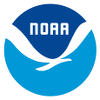Lake Michigan Field Station
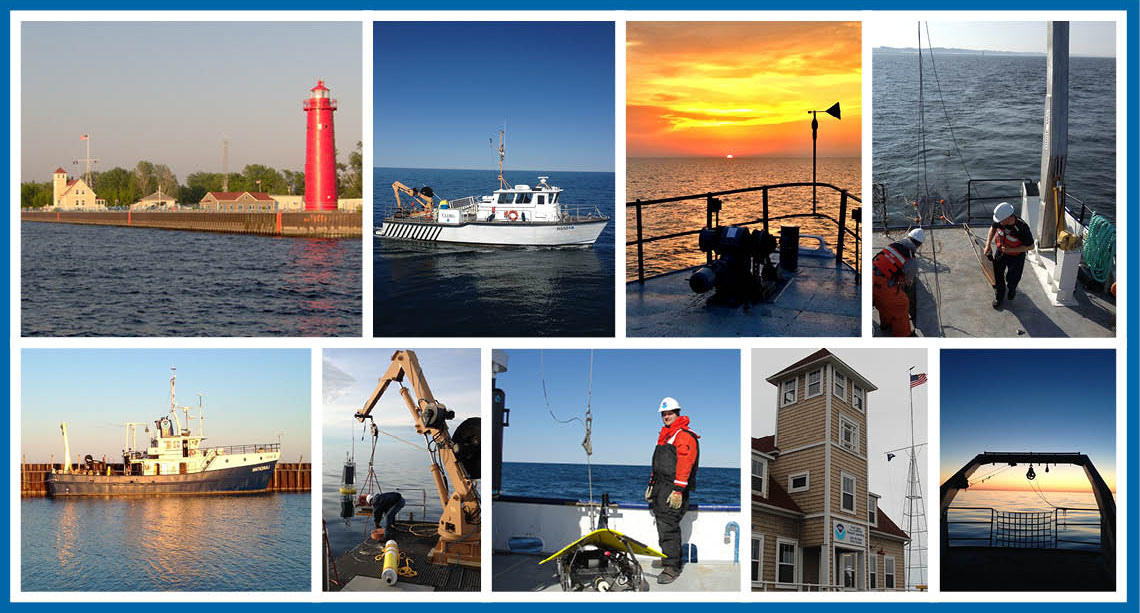
NOAA GLERL's Lake Michigan Field Station (LMFS) is the home port for NOAA Great Lakes vessels, which operate throughout the Great Lakes.
It is also home for the long-term observations research program on Lake Michigan.
The LMFS is strategically positioned on Lake Michigan to provide support to the local and regional community by further developing NOAA's role
in freshwater ecology, ecosystems management, coastal management, and water-based commerce. This field station promotes long-term observations,
field work, and process studies essential for understanding and developing future ecological services.
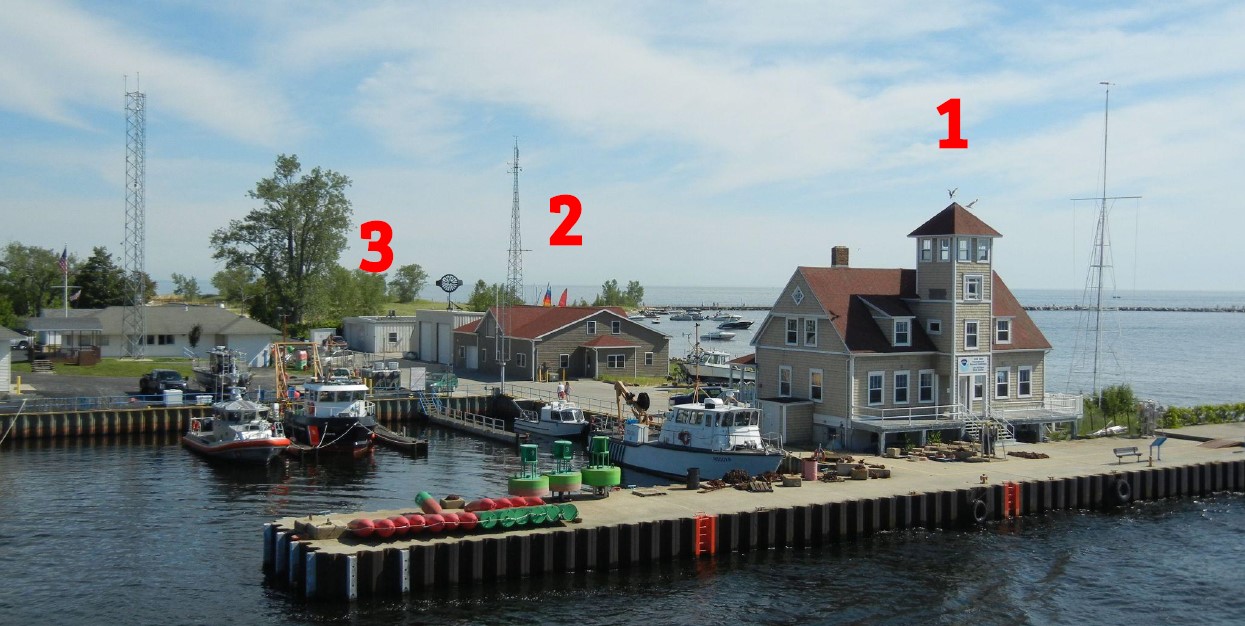
NOAA GLERL's Lake Michigan Field Station (LMFS) is strategically located on the eastern shore of Lake Michigan in Muskegon, Michigan. The LMFS serves as the home base for field operations, field research, and NOAA regional vessel operations—critical assets in providing physical access to the Great Lakes and advancing NOAA’s mission in the region.
In 1990, GLERL assumed ownership of the former Coast Guard Life Saving Station on the south side of the channel between Muskegon Lake and Lake Michigan. The site includes three buildings and adjacent research vessel dockage; 10 staff are located on site with seasonal increases during summer field season. With its distinctive building architecture and prime location adjacent to public parks, the field station has become an icon of the Muskegon community. Its buildings, however, are aging and face significant capital improvement needs.
Beginning in the fall of 2023, Buildings #1 and #3 will undergo major rehabilitation and construction to further improve science operations as well as maintain the historic character of this important community asset.
Latest Updates
Please continue to be mindful of fencing, signage, and equipment as construction preparations are underway.
| Status Update 5 - April 11, 2024: Building 1: Cement work will begin in Building 1 today. This work will entail the coming and going of many large cement trucks and equipment. Please maintain safe passage through the public walkways. When possible, we encourage the public to avoid the area altogether. Pending weather delays, this major step in the work should be complete by the week of April 15. Building 3: Our reconstruction of the interior of Building 3 is moving along. The flooring is set and wall framing is underway. We do not anticipate any additional community impact as this work continues. |
|
| Status Update 4 - February 9, 2024: Building 1: This work is still temporarily on hold. Engineering plans are in the works and progress should be underway soon. Building 3: Interior demolishion is complete. Plumbing and floor replacement will begin soon. (See photo on right.) |
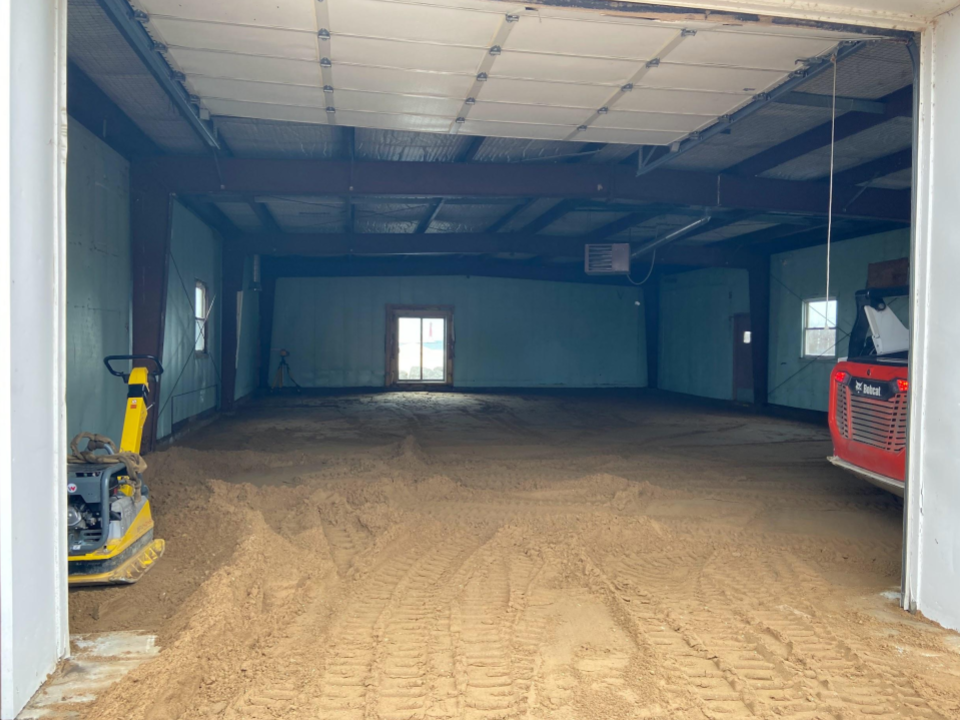 |
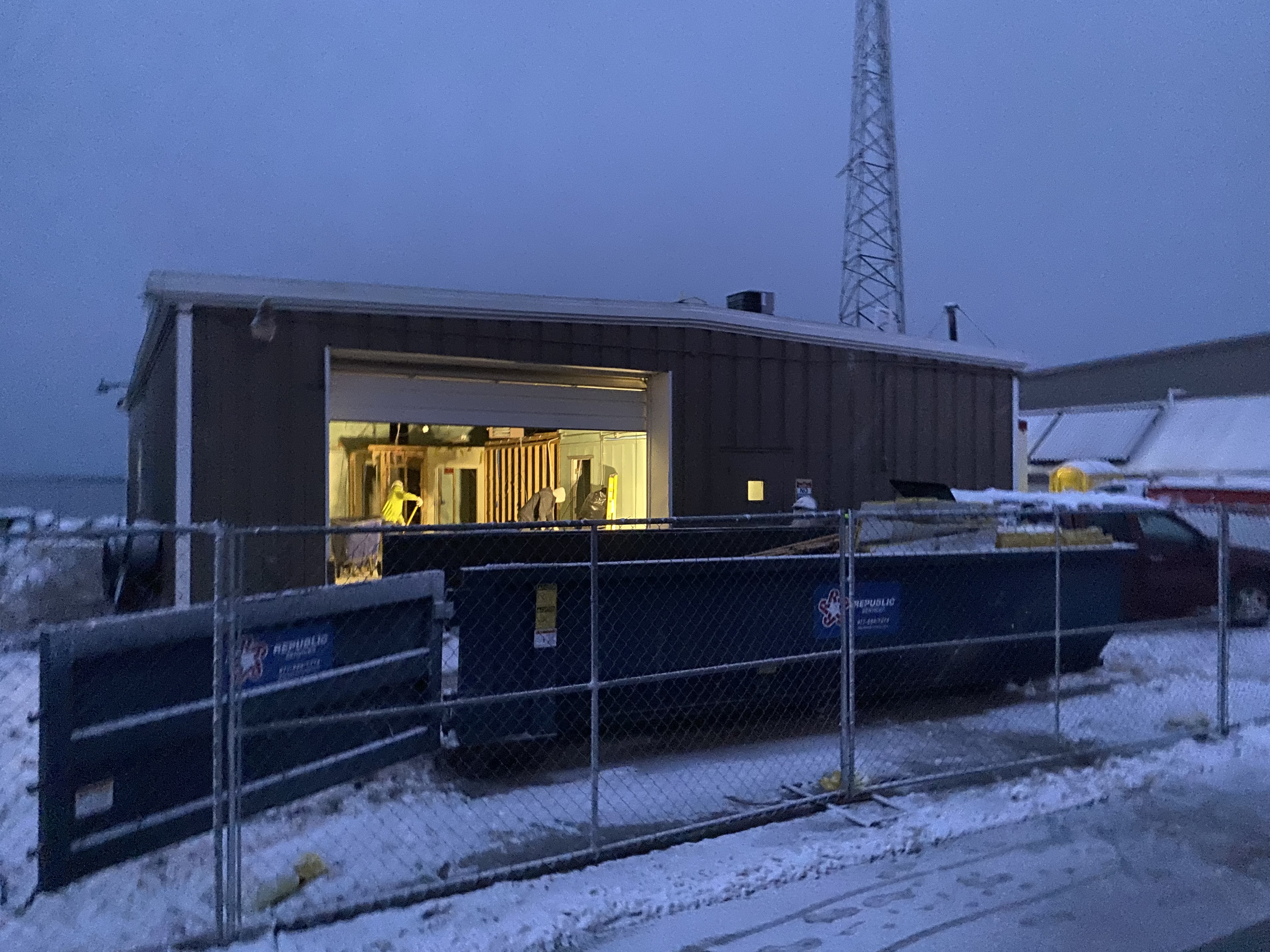 | Status Update 3 - January 24, 2024: Building 1: This work is still temporarily on hold. Building 3: Interior demolition is well underway! (See photo on left.) Please be mindful of the icy conditions along the public pathway throughout this cold stretch. |
Status Update 2 - January 3, 2024:
Building 1: There is a temporary pause on foundation repairs in Building 1, while the contractor works to revise engineering plans. A new walking path has been constructed to reroute pedestrians to the West of the building.
Building 3: Fencing will be installed around Building 3 next week (the building closest to the entrance). Interior demolition will begin soon.
Status Update 1 - December 19, 2023:
Construction staging for the rehabilitation of Building 1 (The historic life saving station) is underway. The construction crew will be erecting fencing and rerouting the walking path to the lighthouse. Removal and repair of the basement floor will begin soon.
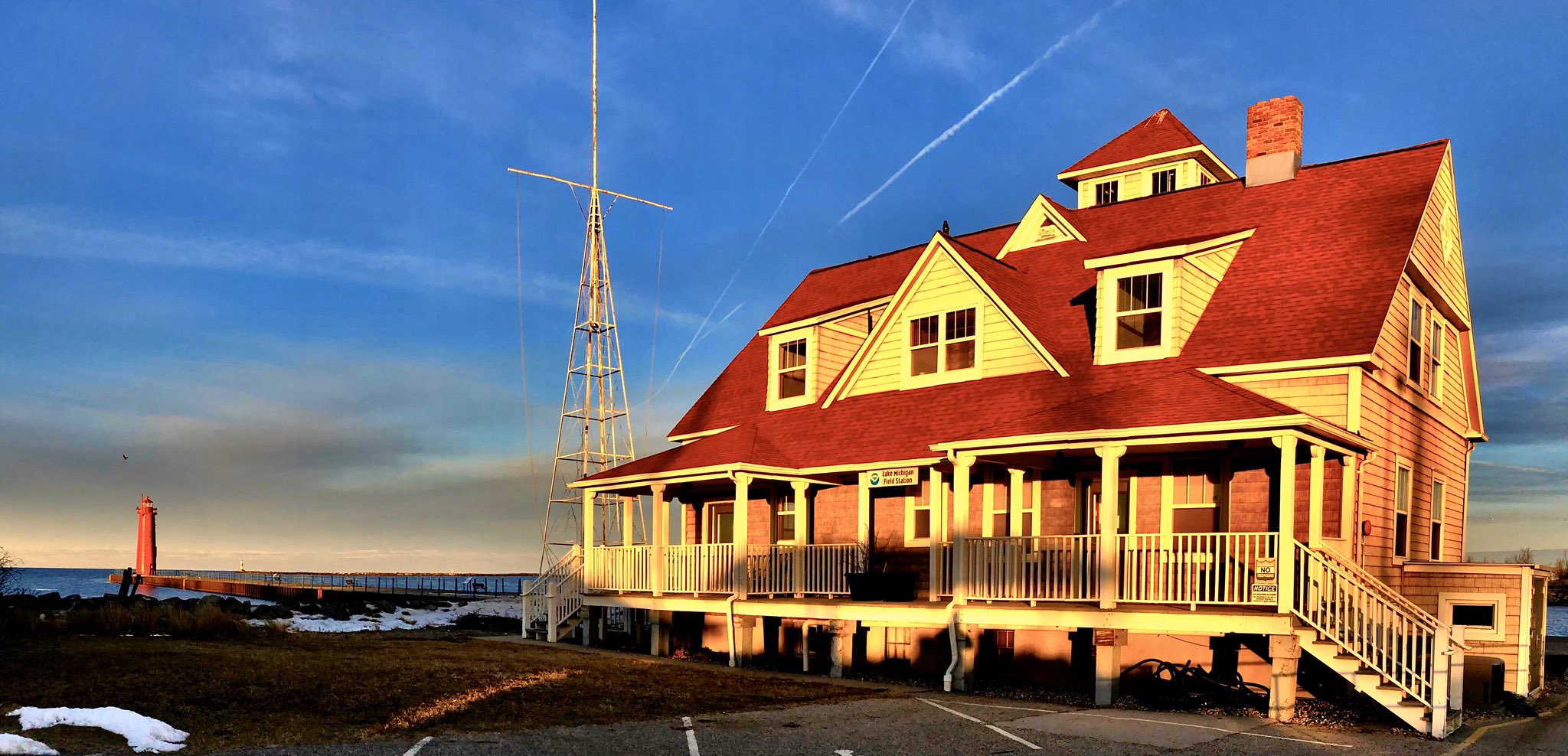
In 1990, the National Oceanic and Atmospheric Administration's Great Lakes Environmental Research Laboratory (GLERL), part of the U.S. Department of Commerce, assumed ownership of the former Coast Guard base at Muskegon, Michigan on the south side of the channel between Muskegon Lake and Lake Michigan. The site includes three buildings and research vessel dockage next to the main building.
The US Coast Guard established the Muskegon Life Saving Station in 1879, and a building was constructed at the current location in 1905. You can read more about its history from this PDF from the Coast Guard and from this page on the Michigan Lighthouse Conservancy's website.
With its distinctive building architecture and prime location adjacent to public parks, the field station has become an icon of the Muskegon community. The LMFS is centrally located on the Maritime Heritage Walkway, which was funded by a NOAA Preserve America grant in 2009. Interpretive signage along that walkway includes educational opportunities that explain the technical and green elements of the facility. That spirit of preservation was made evident in the softening of landscape, native dune grass plantings, and habitat reclamation.
Beginning in the fall of 2023, Buildings #1 and #3 will undergo major rehabilitation and construction to further improve science operations as well as maintain the historic character of of this important community asset.
Facilities

Building 1
A renovation project on Building 1 was completed in 2005 on the 100th anniversary of the building. Great care was taken to recreate the exterior architecture and maintain the historic details of its original design. While modern materials were used, this prominent building appears just as it did to the lumber schooners in the last days of sail. Much of the interior spaces, mechanical, and utilities were upgraded but maintain the color schemes and layout of its early days in the Life Saving Service. (pictures can be seen here at the Michigan Lighthouse Conservancy's website)
Building 1 houses office space, a conference room, field staging area, wet lab for fish and invertebrate research, and short-term dorms. Due to variable water levels in the Great Lakes, Building 1 will undergo additional rehabilitation, beginning in Fall 2023, to ensure that historic aspects of the building are maintained and this community asset will be supported for years to come.
Building 2From January to October 2012, this building was completely renovated. The exterior of the building was designed to complement the architecture of the adjacent 1904 main building. A boathouse that stood on the site 100 years ago offered design details that have renewed relevance today. Large windows provide natural light and ventilation to all work areas. Reuse of 80% of the existing structure, new materials from regional sources, and selection of high efficiency components support sustainability goals. Installation of an innovative storm water collector (see below) with hydrocarbon filters demonstrates a practical means of protecting this fresh water resource. Demands on city water are reduced by the installation of a lake water pump for irrigation and boat maintenance. An existing meteorological shore station and offshore buoys are now complimented by the addition of a wind turbine and solar collectors, providing a connection from observed weather to harnessing nature's energy.
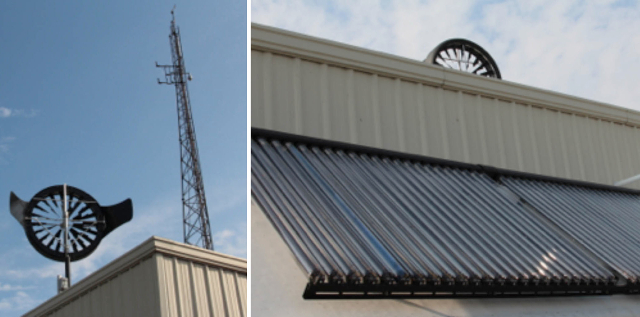
The addition of a wind turbine and solar collectors provide a connection between our observed weather stations (existing meteorological shore station and off shore buoys) and harnessing nature's energy.
The new 1.5 KW horizontal axis turbine (pictured above left) not only adds to the renewable energy capacity but also allows for side by side evaluations of "small wind" turbine technologies. A portion of the building's heat and domestic hot water is provided by the array of 24 evacuated tube solar collectors (pictured above right) generating 106,000 BTUs integrated with the boiler system.
Building 2 houses offices for vessel crew, a conference room, locker/shower room, shop, tool room, storage rooms, second floor loft for valuable storage and enhanced natural ventilation, fuel/oil shed, and two high-bays for vessel maintenance. Multi-use, shared workspaces reflect the utilitarian feel of the original building and promote teamwork.
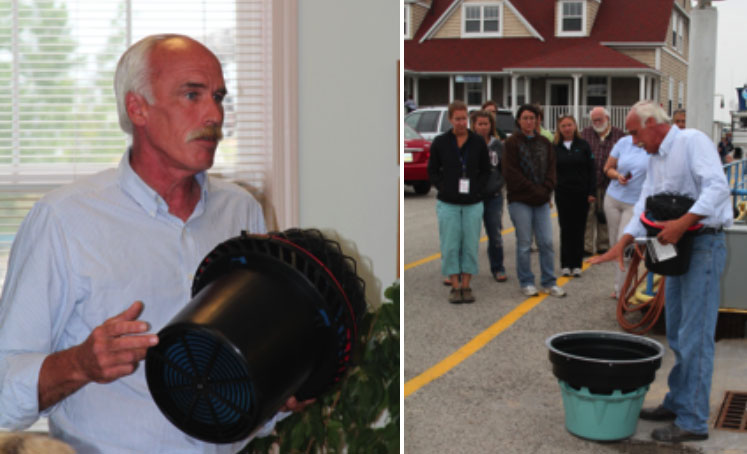
At the LMFS, installation of an innovative storm water collector with hydrocarbon filters demonstrates a practical means of protecting this fresh water resource.
Building 3 contains three labs that house water filtering stations for nutrients and chlorophyll, a bench-top fluorometer, a spectrometer, sensors for field use (CTDs), three incubators, a cryo-freezer, an inverted microscope for phytoplankton work, and a dissecting scope for zooplankton work. Beginning in Fall 2023, this buidling will be demolished and reconstructed to futher improve science operations at the field station.
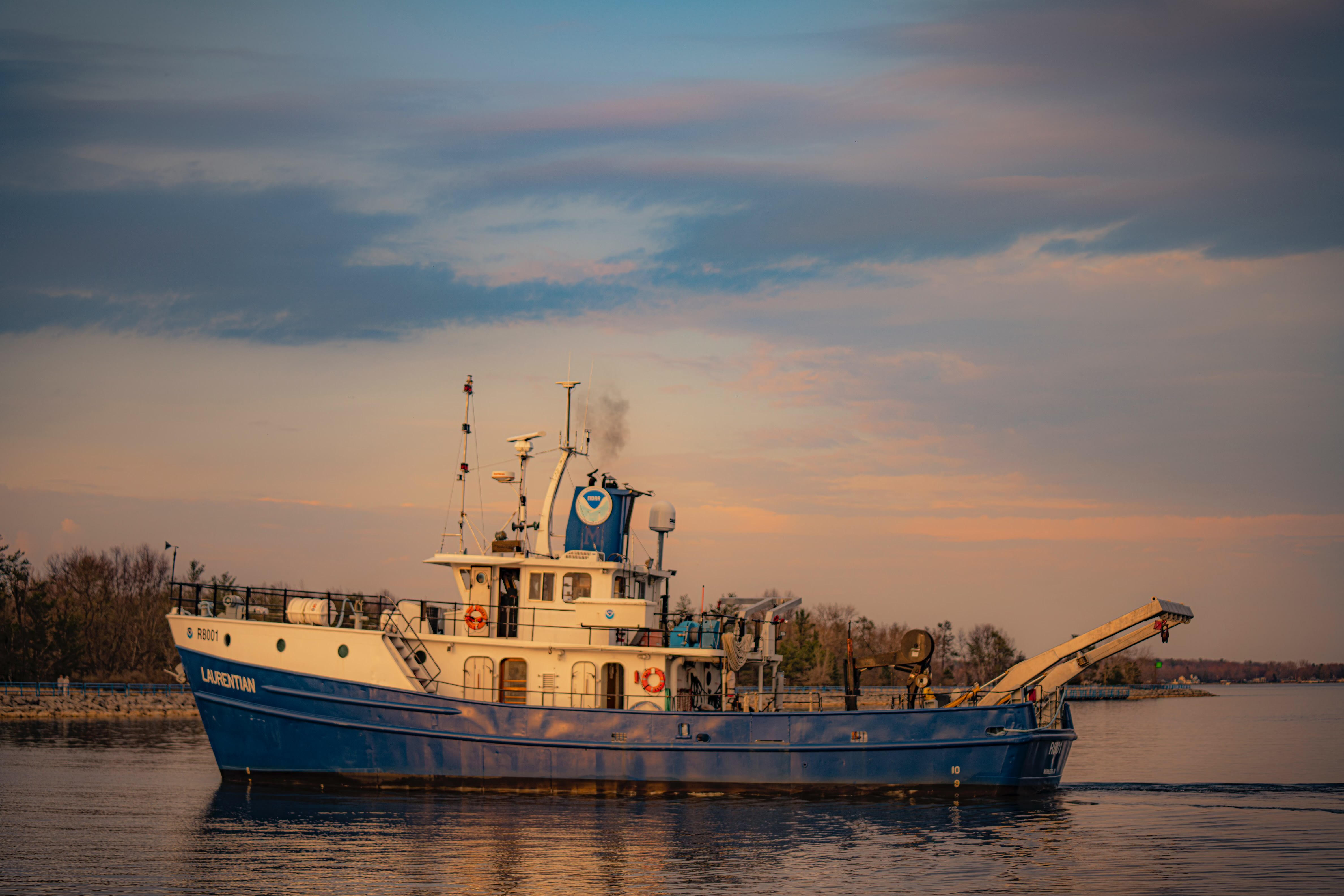
NOAA operates a fleet of research vessels and small boats on the Great Lakes. As part of its larger stewardship mission in the marine environment, NOAA has converted its research vessels from petroleum-based fuels and lubricants to renewable and environmentally-friendly products that reduce fossil fuel emissions.
GLERL's Green Ship Initiative, begun in 1999, has led the nation by successfully converting the laboratory's entire diesel-powered vessel fleet to biofuels and bio-lubricants. This effort produced the first federal vessel to run completely on non-petroleum products. The marine diesel-powered vessels in the Great Lakes are now fueled by B100 (100%) soy biodiesel, a true renewable energy source. This is a significant advancement over the use of B20 petroleum blends (20% biodiesel and 80% petroleum diesel). All other shipboard mechanical and hydraulic systems on GLERL vessels have been converted to use bio-products (bio-based oils and lubricants made from rapeseed and canola oils) to meet the objective of totally petroleum-free vessels.
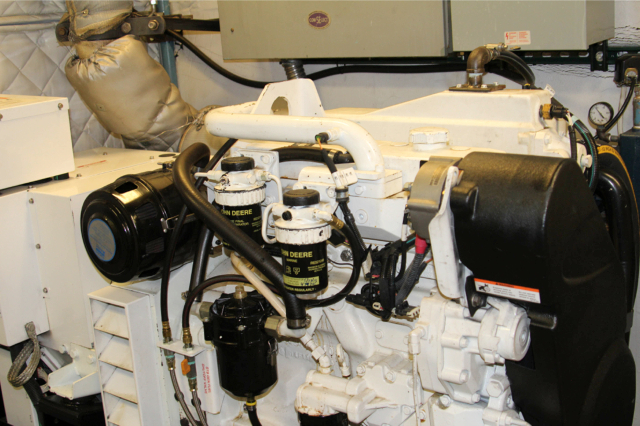
The R/V Laurentian's (see top image) alternative fuel program has exclusively used B100 soy Biodiesel for the past seven seasons. Current investigations include new technologies to blend diesel with compressed natural gas (CNG) to further reduce cost and emissions. The vessel's main propulsion engine (pictured) and its primary generator run on biodiesel and use other bio lubricants.
Advantages of Biofuels
B100 biodiesel has many benefits over traditional, petroleum-based diesel fuel. It reduces air pollution, costs less than petroleum diesel, and results in cleaner engines. Experts estimate that about 1/3 of our transportation fuel needs can be met by domestically-produced biofuels.
Environmental and Social Benefits
- Decreases emissions of fossil fuels that contribute to climate change and air pollution
- Lessens risk of environmental harm in the event of a fuel spill
- Reduces dependence on imported oil
- Supports agriculture and the U.S. economy
Operational Benefits
- Improves engine performance
- Extends engine life
- Reduces need for engine maintenance due to cleaning properties of biodiesel
- Reduces operating and maintenance costs by 20-40% vs. petroleum-based fuels
Human Health Benefits
- Reduces exposure to harmful and cancer-causing chemicals
- Reduces seasickness due to less offensive odor
Green Tips for Recreational Boaters
Any diesel-powered boat can be converted to run off biofuels, just like GLERL's vessel fleet. Converting your boat is not only good for the environment,
it's better for the health and safety of you and your family. Even gasoline-powered vessels can "go green" by using bio-based oils and lubricants. There are
many technologies emerging to make recreational boating more environmentally-friendly, including the use of alternative fuels such as ethanol and butanol that can
improve engine performance and reduce air pollution. GLERL has assisted industry groups in evaluating alternative fuels for gasoline engines and has helped develop
best industry practices.
In addition to biofuels, there are many other ways to reduce your recreational vessel's impact on the environment. These include eliminating overboard discharges
of waste, following best practices for fueling your boat, and using environmentally-friendly alternatives to anti-fouling bottom coatings. These tips and more
are available here from the U.S. Environmental Protection Agency and
here at eartheasy.com.
You can also help the environment by docking your boat at a certified Clean Marina that is committed to environmental stewardship. More information
on Clean Marinas is available here from NOAA.
How old are the buildings at the NOAA Lake Michigan Field Station (LMFS)?
Building 1 (1905) is a historical site that NOAA took over from the US Coast Guard. It is the main office space and houses the marine superintendent and scientists stationed at LMFS.
It also contains a lab area that is used mainly for analyzing fish samples.
Building 2 is for vessel operators who oversee the maintenance and underway periods for vessels.
Building 3 is primarily a laboratory, but it also has a small office space. Building 3 is set for demolishion and reconstruction in Fall 2023.
Does the public have access to the pier lighthouse? If so, is there a possibility of going through the lighthouse?
The lighthouse is run by the Muskegon community. Click here for more information.
What are the operating hours of LMFS?
LMFS operates Monday through Friday 8AM to 4PM.
Is fishing allowed along the pier?
Yes. However, please use caution and always walk between the yellow lines. This will help ensure your safety when boat operators, scientists, and the coast guard are working in the lagoon area.
Are there tours available for NOAA's LMFS
Due to limited staff, LMFS does not provide tours to the public.
Lake Michigan Field Station (LMFS)
1431 Beach Street
Muskegon, MI 49441
LMFS main line 231-755-3831
LMFS Map LMFS Web Cams and Current Conditions LMFS Images

